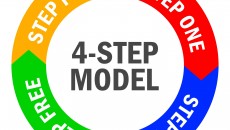Why leadership development…
Improving leadership development programs, growing talent internally and enhancing effectiveness of the senior management team are some of the top challenges on the minds of CEO’s, alongside business growth.
We need great leaders to shape and sustain our organizations and to mould our future leaders. We need leaders leading with a winning vision, delivering both short-term and long-term results by using competitive strategies and promoting innovation with a thorough understanding of their business.
Leadership development initiatives in organizations are directed toward specific goals at different levels.
• At an organization level, initiatives mostly involve assessing the strength of the current leadership and developing a strong leadership bench with focused plans to tackle organizational gaps that could otherwise impact the organization’s current or future strategy, standards of behavior and cultural norms.
• At a job level, it might be targeted at enhancing the effectiveness of current leadership roles by identifying and developing specific competencies for specific roles.
• Furthermore, at an individual level, leadership development might be focused on identifying likely successors for critical roles or placement of individuals in these roles.
However, the ultimate goal is to power the leaders capability to develop and engage their employees, yielding better levels of productivity, engagement, and retention.
The methods used for leadership development vary from formal training in a classroom (real or virtual), to informal learning, including self-guided or structured material.
Action learning, e-learning and simulations have become common approaches in leadership development.
Community and network involvement through ‘communities of practice’ add a social learning element to leadership development.
The best approaches to leadership development are characterized by a “leaders at all levels” approach, with strong top management commitment and alignment with the business strategy through leadership competencies.
• At an organizational level, one of the critical factors for the success of a leadership development program is its alignment with business measures (impact objectives) from the very beginning, and involving the right people at the right time.
• At a performance level, application objectives linked to the impact objectives need to be established for the program.
• At an individual level, the learning needs for the target audience need to be identified and clear expectations need to be set to achieve results.
The success of leadership development programs in organizations will therefore depend on a seamless ‘chain of impact’ that delivers the expected business outcomes.





